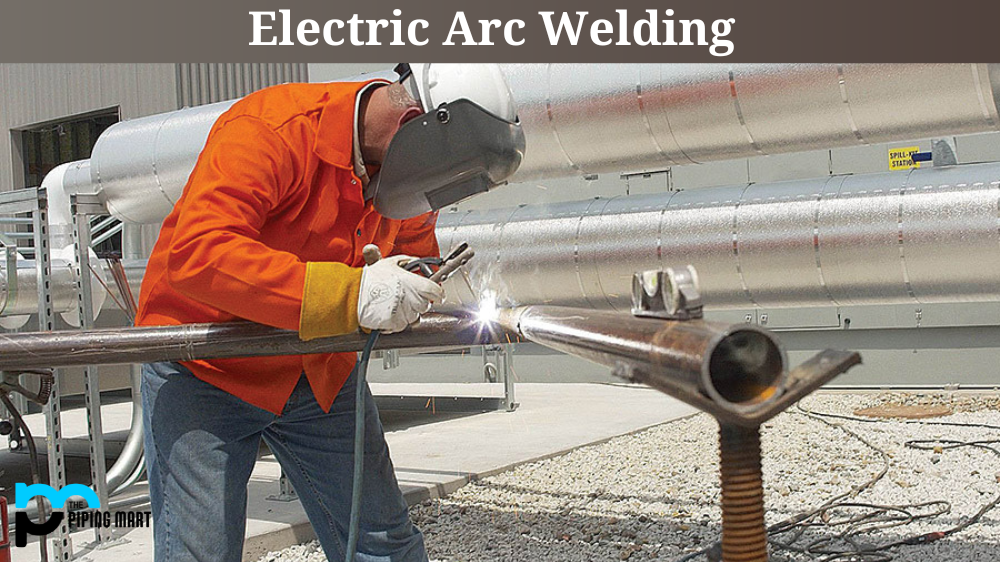Electric arc welding is a type of welding that uses electricity to join two pieces of metal together. It is one of the most commonly used welding processes and has many advantages over other types of welding. However, electric arc welding also has some disadvantages you should be aware of before using this method. Let’s take a look at the pros and cons of electric arc welding.
Advantages of Electric Arc Welding
One advantage of electric arc welding is that it is very efficient. This process requires fewer filler materials and no additional shielding gases, making it an economical choice for welders. Additionally, electric arc welding does not require as much time or specialized equipment as other types of welding, and reducing labour time can help cut down on fabrication costs. Furthermore, electric arc welds are stronger than other types of welds due to the high temperatures generated by the process, which can result in higher tensile strength and better corrosion resistance.
Electric arc welding also offers greater precision than traditional methods such as oxy-acetylene or stick welding since operators can control the current level more precisely. This allows for more accurate welds with fewer defects and less wasted material. Finally, this method is relatively safe since no hot sparks or open flames are created during the process. This makes it an excellent choice for jobs performed in tight spaces or areas with hazardous materials since there is less risk of fire or injury from sparks.
- Electric arc welding is a type of welding that uses an electric arc to create heat, which melts the metal and allows it to be joined together.
- Electric arc welding is faster than other types of welding, such as gas welding.
- Electric arc welding is less likely to cause warping or distortion of the metal.
- Electric arc welding produces less fumes and smoke than other types of welding.
- Electric arc welding can be used on various metals, including aluminium and stainless steel.
For all its benefits, however, electric arc welding has some drawbacks that you should consider before choosing this method over another type of weld.
Disadvantages of Electric Arc
Welding
One potential disadvantage to using electric arc welding is the high cost associated with purchasing the necessary equipment and supplies needed to get started with this method—it can be expensive compared to other types of welding because it requires special tools such as power supplies and electrodes as well as protective clothing and eyewear to protect against UV radiation exposure during operation. Additionally, because electric arc produces more smoke than other processes like MIG (Metal Inert Gas) or TIG (Tungsten Inert Gas) welding, extra ventilation might be necessary for enclosed areas where fumes could accumulate quickly. Finally, this process creates splatter, which must then be cleaned up afterwards—something else that adds time and expense to any job using this technique.
Limited Use
One of the primary disadvantages of electric arc welding is that it can only be used on certain materials. Electric arc welding is best suited for use on metals with high carbon content, such as iron and steel. Additionally, the metal must be thick enough to conduct the electric current. This limits the potential applications of electric arc welding.
High Cost
Another disadvantage of electric arc welding is the high cost of the equipment. Electric arc welders can be very expensive, which makes them inaccessible to many people. The cost of consumables, such as electrodes and power supplies, can also be quite high.
Health Risks
Electric arc welding also poses health risks to the welder and those nearby. The electric current used in welding can cause burns, while the sparks produced by the welding process can cause eye damage. Additionally, inhaling fumes produced by the welding process can also harm health.
Environmental Risks
Electric arc welding can also have some negative impacts on the environment. The process produces harmful emissions, including nitrogen oxides and carbon dioxide, which can contribute to air pollution. Additionally, electric arc welders also consume a great deal of electricity, which can put a strain on power grids.
Requires Specialized Equipment
Electric arc welding requires specialized equipment that is only sometimes readily available. For example, a power source is needed to provide electricity for the welding process. An electrode holder and cables are also required to connect the power source to the electrode.
Can Be Dangerous
Electric arc welding can be dangerous if proper safety precautions are not taken. The welding process produces intense heat and light, which can cause burns if you are not adequately protected. Additionally, the fumes produced during welding can be harmful if inhaled.
Requires Training and Skill
electric arc welding requires training and skill to be performed correctly. If you do not have the proper training, you could end up causing damage to the material you are trying to weld or injuring yourself.
Can Cause Metal Embrittlement
One of the disadvantages of electric arc welding is that it can cause metal embrittlement. This occurs when the weld area becomes harder and more brittle than the rest of the metal. This can weaken the overall structure of the metal and make it more susceptible to breakage or failure.
Conclusion:
Electric arc welding can effectively join metal components together quickly and efficiently while providing strong bonds with excellent corrosion resistance qualities—but it may not always be the best option depending on your project’s requirements. Be sure to weigh both the advantages and disadvantages when deciding whether or not this method will work best for your next project so that you end up with great results!

Meet Bhavesh, a seasoned blogger with a wealth of knowledge and experience. From metal products manufacturing to retail, Bhavesh has a diverse background in various industries and is dedicated to sharing his insights and expertise with readers.




